Faba bean productivity under rainfed and supplemental irrigation in northern Syria

Authors:
Faba bean (Vici faba L.) is one of the major winter-sown legume crops grown in the Mediterranean region, and has considerable importance as a low-cost food rich in proteins and carbohydrates. The period during which the crop's evaporative demand is high coincides with the end of the rainy season; thus, faba bean experiences considerable soil moisture stress during the reproductive growth stage and often produces poor yields. Limited water supply through supplemental irrigation (SI) can boost and stabilize faba bean production. The objective of this study was to elucidate the effects of limited irrigation and sowing date on the yield and water use efficiency of faba bean. An experiment was carried out over four cropping seasons (1996–2000) at ICARDA's main station at Tel Hadya (Aleppo, northern Syria) where mean annual rainfall is 330 mm. A local variety ‘Hama 1’ was grown in rotation with wheat. The experiment included three sowing dates (Early: early November; Normal: mid December, and Late: late January) and four levels of SI (full SI, 2/3 SI, 1/3 SI, and no SI, i.e., rainfed). The overall mean grain yield, which was 1.13 t/ha under rainfed conditions increased to 1.49, 1.77, and 1.89 t/ha at 1/3 SI, 2/3 SI, and full SI levels, respectively. Overall mean water use efficiency was 0.50 kg grain/m3 for rainfed, 0.57 kg grain/m3 for 1/3 SI, 0.61 kg grain/m3 for 2/3 SI and 0.61 kg grain/m3 for full SI. Similarly, the overall means obtained for biomass were 3.26 t/ha for rainfed, 4.0 t/ha for 1/3 SI, 4.50 t/ha for 2/3 SI, and 4.87 t/ha for full SI. The study's results indicated that a 2/3 SI level gives the optimum water use efficiency for both grain and biomass under SI. Early sowing date of faba bean steadily increased grain yield: 1.73 t/ha for early; 1.60 t/ha for normal; and 1.38 t/ha for late. Biomass yield followed a similar trend: 5.13 t/ha for early; 3.86 t/ha for normal; and 3.48 t/ha for late. Biomass water use efficiency under SI decreased with the delay of sowing from 1.72 kg/m3 for early to 1.33 kg/m3 for late sowing dates. Overall mean grain water use efficiency was 0.59 kg/m3 for early; 0.61 kg/m3 for normal and 0.52 kg/m3 for late indicating that the optimal sowing date is mid December. Both sowing date and SI had a highly significant effect on crop yield. A year-by-year data analysis showed that SI had a significant impact on yield, whereas sowing date did not show such impact in all years. Finally, water production functions for faba bean under supplemental and rainfed conditions were proposed.
